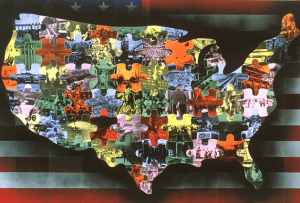
“What Justice Kennedy has undertaken in this initial statement of fact, or more properly, of data, that is to say, facts accepted for purposes of the argument…”
– Jonathan Z. Smith, “God Save This Honourable Court” (Relating Religion, p. 382)
While she was on our campus a few weeks ago, I noticed Monica Miller using the word “data” to refer to the things that she studied — things such as African American religion, scholars of African American religion, rap lyrics, and rap artists — and so I asked her a question or two about what she thought was entailed in that word and why she seemingly opted for it rather purposefully in both her public lecture, the evening before, and then during an informal lunchtime discussion with our students the next day. And then, just the other day, Leslie Smith posted on this site, using this four-lettered word in her post’s title — a use that did not go unnoticed by some on Facebook who soon were debating what was termed the dehumanizing effects of such objectifying terminology. (And now the Bulletin‘s blog has entered the debate as well.) Continue reading “Using Four-Lettered Words: Part Two”



 Monks in Myanmar encouraging violence, while that image challenges common assumptions about those who identify as Buddhists, accounts of such events often actually reinforce those assumptions. On April 30 people identified as Buddhists burned mosques and homes of a minority group identified as Muslim, reportedly resulting in injuries and one death.
Monks in Myanmar encouraging violence, while that image challenges common assumptions about those who identify as Buddhists, accounts of such events often actually reinforce those assumptions. On April 30 people identified as Buddhists burned mosques and homes of a minority group identified as Muslim, reportedly resulting in injuries and one death.  Listen to
Listen to  Watching “Monty Python and the Holy Grail” this weekend, I was struck by the scene where King Arthur introduces himself to a few of his subjects, who happen not to see themselves as his subjects.
Watching “Monty Python and the Holy Grail” this weekend, I was struck by the scene where King Arthur introduces himself to a few of his subjects, who happen not to see themselves as his subjects. 
 During the 1800’s, British colonizers identified particular conflicts as being “religious,” a description that many now describe as part of the British strategy of Divide and Rule. Scholars have noted examples of British accounts of “religious conflict between Hindus and Muslims” whose details, as the British recorded them, actually undermined such assertions, as participants whom the records identified as Hindus and Muslims participated on both sides of specific conflicts.
During the 1800’s, British colonizers identified particular conflicts as being “religious,” a description that many now describe as part of the British strategy of Divide and Rule. Scholars have noted examples of British accounts of “religious conflict between Hindus and Muslims” whose details, as the British recorded them, actually undermined such assertions, as participants whom the records identified as Hindus and Muslims participated on both sides of specific conflicts.  Q:
Q:  In a recent New York Times
In a recent New York Times